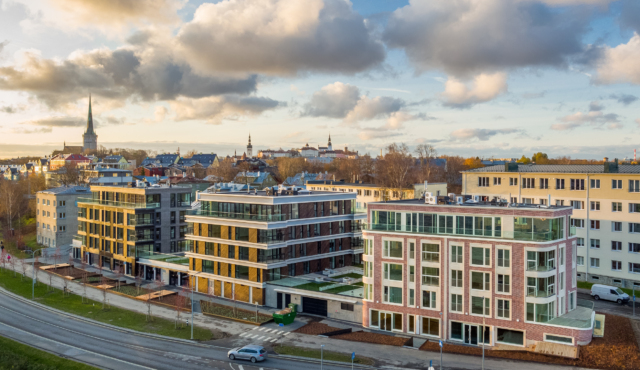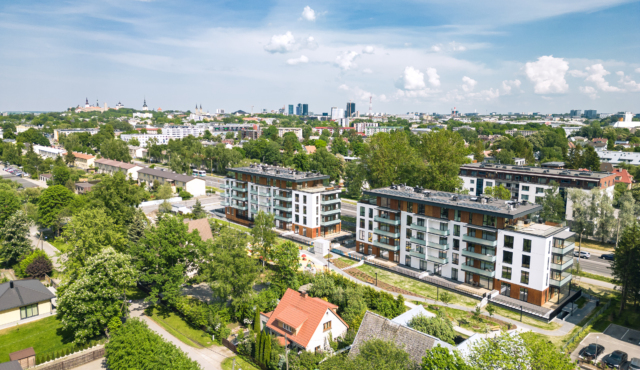Rainwater delights both residents and plants
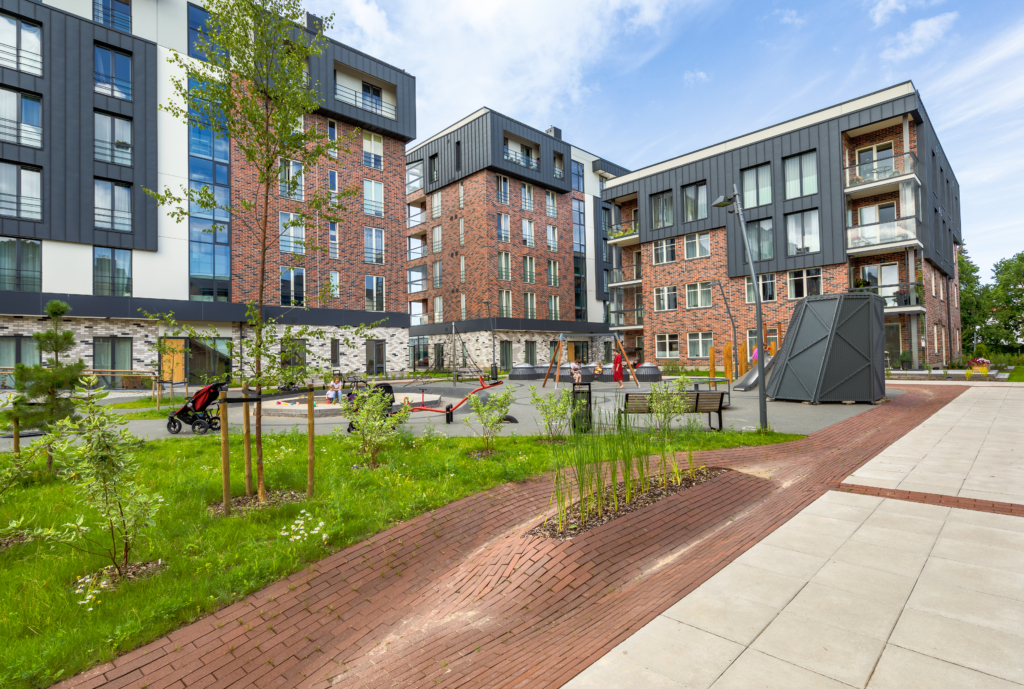
In densely populated areas, rainwater storage and controlled seepage are gaining more and more attention due to their benefits. One of the successful examples of the smart use of rainwater in Tallinn is the courtyard at Uus-Veerenni, which won the annual award of the Estonian Association of Landscape Architects at the end of 2020 and was completed in cooperation with KINO landscape architects. While usually people try to get rid of excess rainwater as quickly as possible and drain the water out of their yards quickly, precipitation is used at Uus-Veerenni for aesthetic purposes and to benefit the environment.
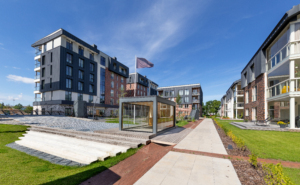
Courtyard of the first stage of construction at the Uus-Veerenni development project. Photograph: Tiit Veermäe
How to get more out of precipitation? In the case of heavier rainfall, rainwater systems in urban areas cannot take in all the excess water at once. Therefore, an intermediate location for excessive precipitation must be found to prevent flooding. In the courtyard of the first stage of construction at Uus-Veerenni, rainwater is collected from the roofs of the houses and from the courtyard area by means of gutters. The water then flows along a gutter into a sloped reservoir, or a temporary pond, on the lawn, which is located in the part of the yard where there is no underground garage, but ordinary soil. The reservoir is like a large tub with a drain pipe at the bottom: if more water comes in than the pipe can drain, the pond will fill with water; when the flow of excess water stops or decreases, the water level in the pond decreases. Thanks to this system, a significant amount of precipitation seeps on site and reduces the amount of excess rainwater that has to be pumped away from the area.
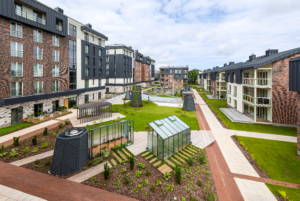
Courtyard of the first stage of construction at the Uus-Veerenni development project. Photograph: Tiit Veermäe
Controlled seepage of rainwater:
- is environmentally friendly;
- helps to preserve various resources;
- reduces the risk of flooding;
- reduces the load on rainwater pipelines, which can overflow in the event of excess water;
- offers the opportunity to use cheaper water – children can splash around in the playgrounds and hobby-gardeners can water their plants with the rainwater;
- feeds into the local groundwater, reducing the load of purifiers, as the water seeping locally is cleaner than water that travels a long way carrying with it a variety of rubbish (e.g. cigarette butts);
- nourishes local vegetation – local natural biodiversity increases in both flora and fauna;
- helps the water collected by the roots of plants and expelled through leaf matter to regulate the microclimate and reduce the heat island effect.
We are building the next similar smart water use system in the courtyard of the fifth stage of construction at Uus-Veerenni. If you would like your future home to have a yard where rainwater is used in an environmentally friendly way, be sure to check out the selection of apartments available at Pille 11 and Veerenni 36b.
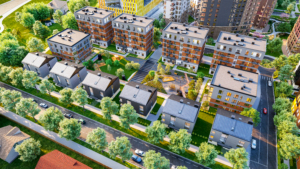
Courtyard of the houses at Pille 11 and Veerenni 36b. 3D: Valge Mammut


